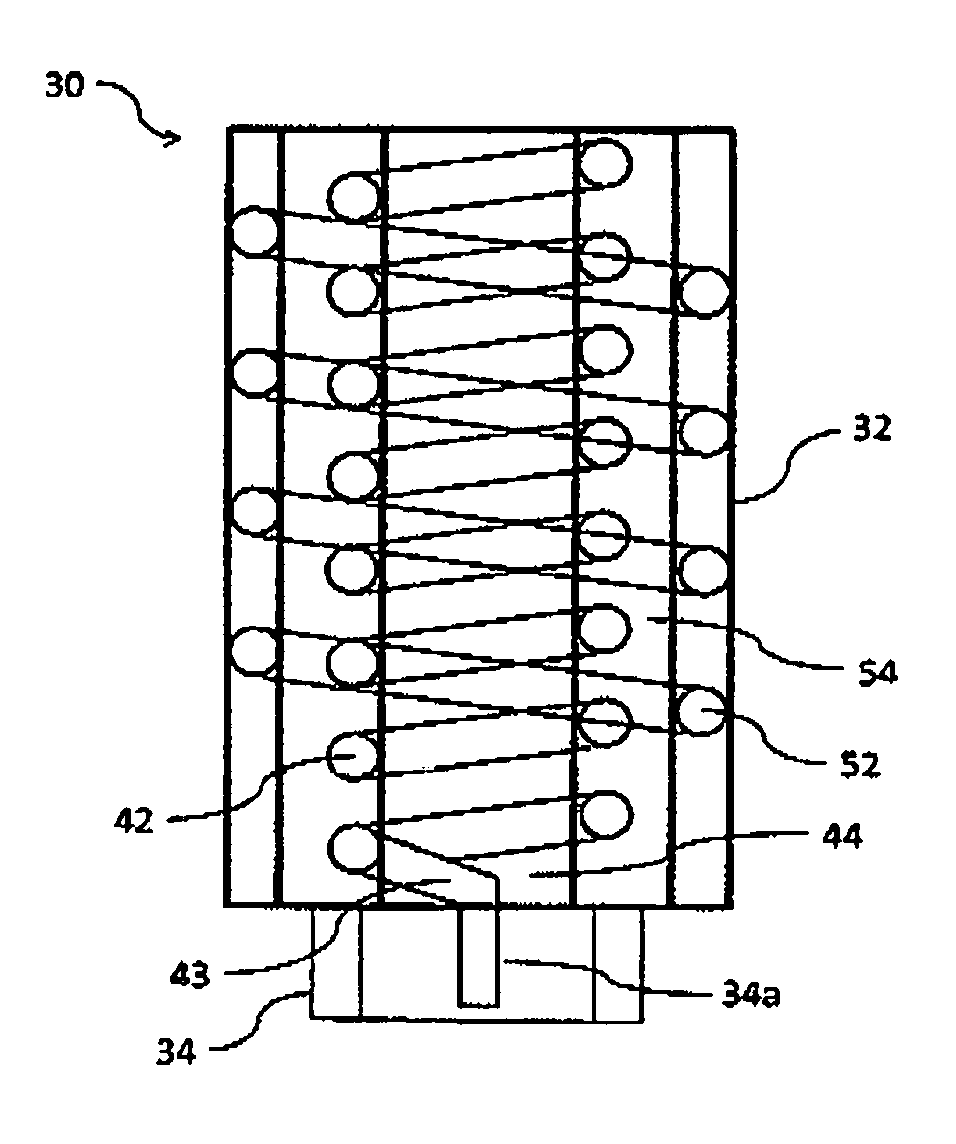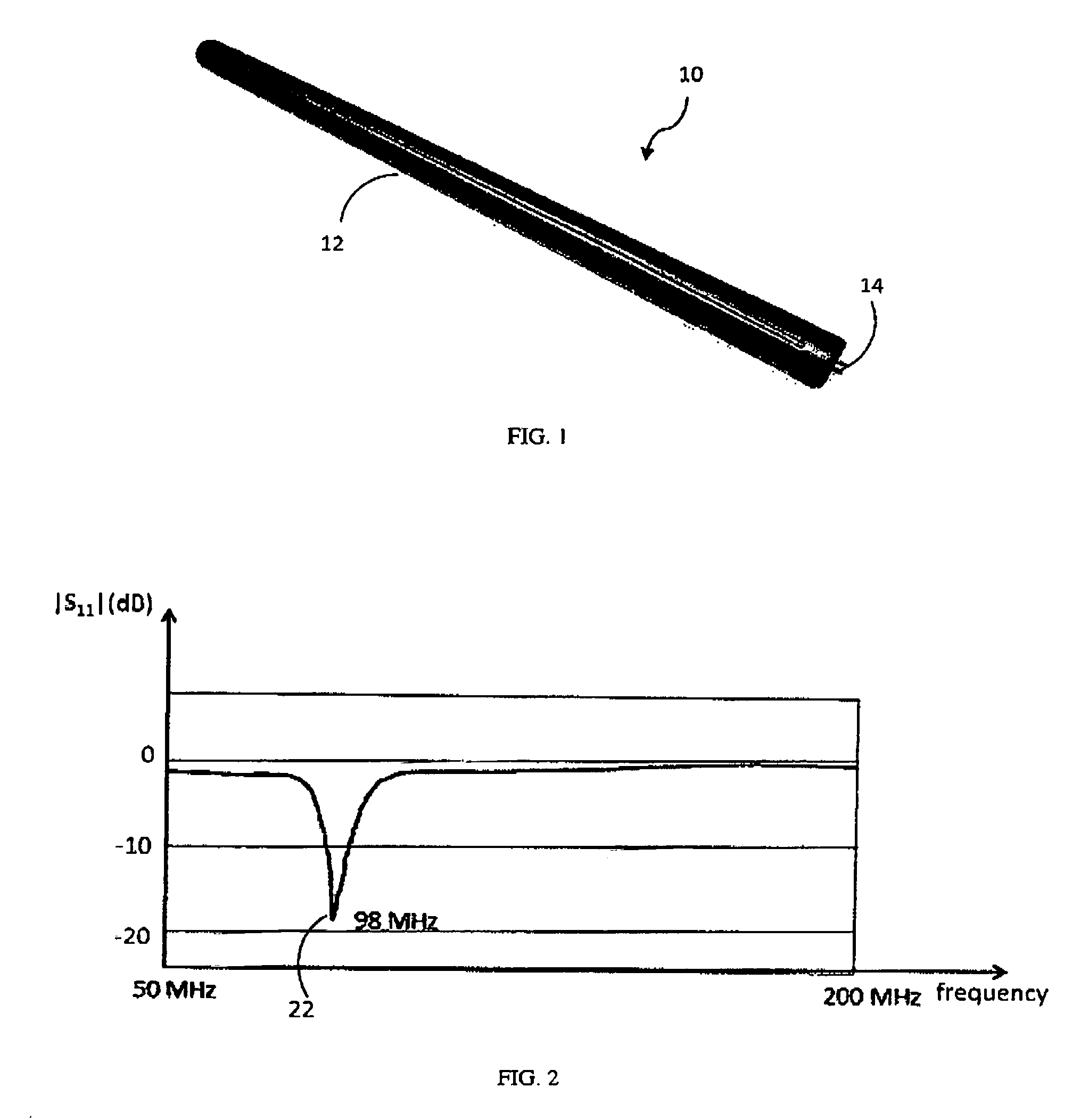Multiband frequency antenna
a multi-band frequency, antenna technology, applied in the direction of antenna details, non-resonant long antennas, antennas, etc., can solve the problems of reducing the size of the antenna, unable to address the use of parasitic helix antennas, and unable to meet the needs of satellite, handheld devices, and automotive industries, etc., to achieve the effect of reducing size, weight and cost, and a larger area
- Summary
- Abstract
- Description
- Claims
- Application Information
AI Technical Summary
Benefits of technology
Problems solved by technology
Method used
Image
Examples
Embodiment Construction
[0020]The following description is of one or more aspects of the invention, set out to enable one to practice an implementation of the invention, and is not intended to any specific embodiment, but to serve as a particular example thereof. Those skilled in the art should appreciate that they may readily use the conception and specific embodiments disclosed as a basis for modifying or designing other methods and systems for carrying out the same purposes of the present invention. Those skilled in the art should also realize that such equivalent assemblies do not depart from the spirit and scope of the invention in its broadest form.
[0021]FIG. 1 shows a commercial 8-in mast antenna 10 used for Frequency Modulation (FM) radio applications. Antenna 10 comprises an antenna radiation element (not shown) contained within antenna enclosure 12. Enclosure 12 provides sturdiness to antenna 10 and protects said antenna radiation element from exposure to environmental effects such as those cause...
PUM
 Login to View More
Login to View More Abstract
Description
Claims
Application Information
 Login to View More
Login to View More - R&D
- Intellectual Property
- Life Sciences
- Materials
- Tech Scout
- Unparalleled Data Quality
- Higher Quality Content
- 60% Fewer Hallucinations
Browse by: Latest US Patents, China's latest patents, Technical Efficacy Thesaurus, Application Domain, Technology Topic, Popular Technical Reports.
© 2025 PatSnap. All rights reserved.Legal|Privacy policy|Modern Slavery Act Transparency Statement|Sitemap|About US| Contact US: help@patsnap.com



